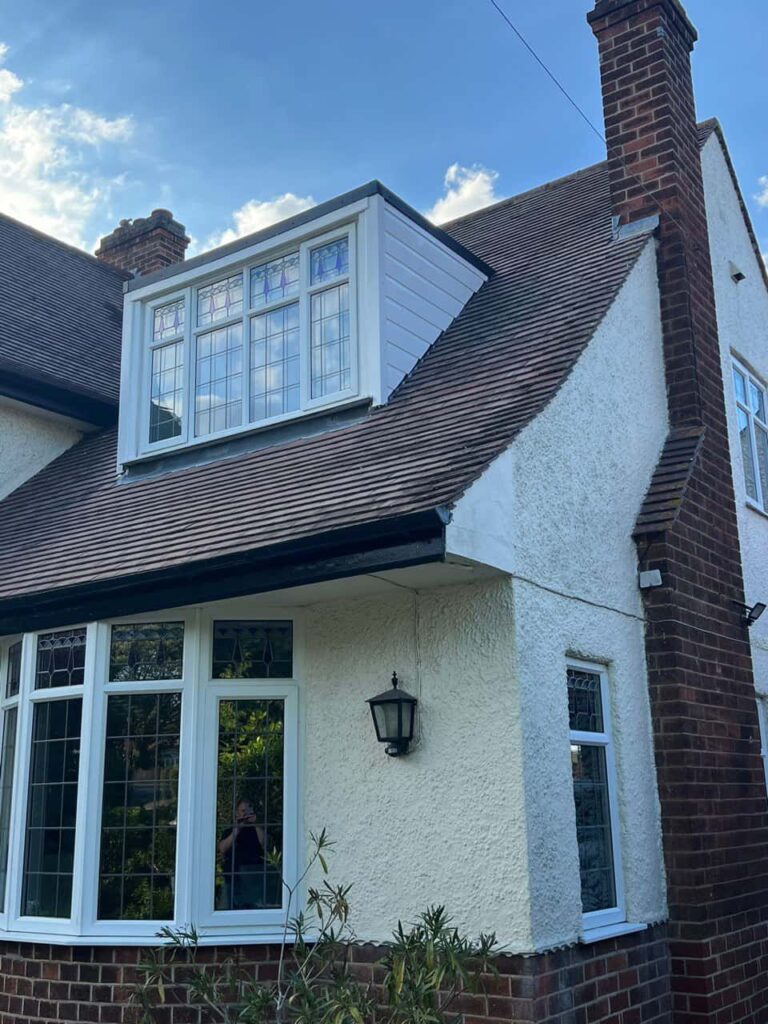A tiled roof is designed to withstand decades of weather exposure, protecting your home from wind, rain, and seasonal changes. However, tiles can sometimes begin to lift, creating gaps that allow moisture and wind to penetrate the roof structure. When this happens, the integrity of the entire roofing system is put at risk. At Tamworth Roofing Repairs, we help homeowners across Tamworth, Staffordshire understand the causes and early warning signs of tile lifting so they can act quickly and avoid further damage.
Identifying this issue early ensures that your roof stays secure, watertight, and structurally sound.
What Is Tiled Roof Lifting?
Tile lifting occurs when roof tiles begin to rise from their fixed position instead of sitting flush with the rest of the roofline. Even slight lifting can compromise stability, making the tiles more vulnerable to wind uplift, slipping, or complete dislodgement.
This problem is more than cosmetic. A lifted tile creates an entry point for rainwater, draughts, and pests, all of which can lead to significant roof deterioration if ignored. Tamworth Roofing Repairs regularly encounters this issue across Tamworth, Staffordshire, often caused by a combination of weathering and structural wear.
Common Causes of Tiled Roof Lifting
Understanding why tiles begin to lift helps homeowners take preventative action and maintain the long-term performance of their roof.
1. Strong Winds and Storm Exposure
High winds can get underneath roof tiles, especially if there is an existing weakness. Over time, this can lift them slightly from their fixings. Tamworth and the surrounding areas often experience gusty conditions that increase this risk.
2. Ageing and Weathering
As roof tiles age, they become more brittle and less secure. Fixings, battens, and underlay can also deteriorate, reducing the tile’s ability to stay firmly in place. Temperature changes cause expansion and contraction, which can gradually weaken the attachment points.
3. Moss and Debris Build-Up
Moss acts like a sponge, holding moisture and lifting tiles as it grows. Debris trapped underneath tiles can also push them upwards. Excessive moss is a common cause of tile movement and lifting on older roofs.
4. Nail or Fixing Failure
Tiles are held in place using nails, nibs, or clips. When these fixings rust, loosen, or fail, the tile can rise or shift from its original position. Fixing failure is especially common on roofs exposed to prolonged moisture.
5. Structural Movement
Over time, timber rafters and battens can move slightly due to moisture changes or natural settlement. This movement can cause tile displacement, especially around ridges, valleys, and junctions where structural changes are most pronounced.
6. Poor Installation Practices
Improper installation—such as using the wrong type of fixings, incorrect tile overlaps, or insufficient securing—can lead to tiles lifting earlier than expected. Tamworth Roofing Repairs often corrects issues caused by previous poor workmanship.
Warning Signs That Your Tiles Are Lifting
Spotting the early signs of tile lifting is crucial to preventing widespread roofing problems. Homeowners should look out for:
Uneven or Raised Tile Edges
Tiles that are no longer flush with the rest of the roof may appear slightly elevated, twisted, or shifted. This is often the first visible sign of lifting.
Gaps Between Tiles
If you see small gaps where tiles should overlap, this usually indicates that wind has begun to lift them or that debris has pushed them upward.
Increased Roof Noise in Wind
If tiles are loose or lifting, you may hear tapping, rattling, or clattering noises during windy conditions. Secure tiles remain silent even in strong gusts.
Water Stains or Damp Patches Inside
Lifted tiles allow moisture ingress. Damp marks in lofts or upper rooms can indicate tiles are no longer sealing the roof effectively.
Excessive Moss Growth
Large patches of moss around tile edges often suggest the tile is being lifted away from the roof surface.
Dislodged Debris Around the Roofline
Debris such as small stones, broken mortar, or fragments of tile around the gutters can indicate movement in the roof coverings.
Why Tile Lifting Should Never Be Ignored
Even slight lifting can lead to:
- Water penetration and internal damage
- Increased risk of tile slipping or falling
- Damage to underlay and battens
- Structural weakening of the roof
- Escalating repair needs during stormy weather
Prompt attention prevents these issues from developing into more serious problems. Tamworth Roofing Repairs provides professional inspections for homeowners in Tamworth, Staffordshire to identify the root cause and restore the tile securely.
How Tamworth Roofing Repairs Helps
Tamworth Roofing Repairs offers comprehensive roof assessments and repair solutions tailored to local roofing styles and weather conditions. Our experienced team identifies tile lifting quickly and applies reliable, long-lasting fixes that protect your home from further damage.
We ensure that all relevant roof components—tiles, battens, fixings, and surrounding materials—are restored to full working condition.
Conclusion
Tile lifting is a common but serious roofing issue that can lead to leaks, structural damage, and costly repairs if left unaddressed. Understanding the causes and warning signs helps homeowners take timely action to protect their property. With professional support from Tamworth Roofing Repairs, properties across Tamworth, Staffordshire can remain safe, secure, and fully protected against the elements.
Call us on: 01827 949 591
Click here to find out more about Tamworth Roofing Repairs
Click here to complete our contact form and see how we can help with your roofing needs.

